11 earthquakes hit Skopje within 32 hours, over 100 people injured – Macedonia
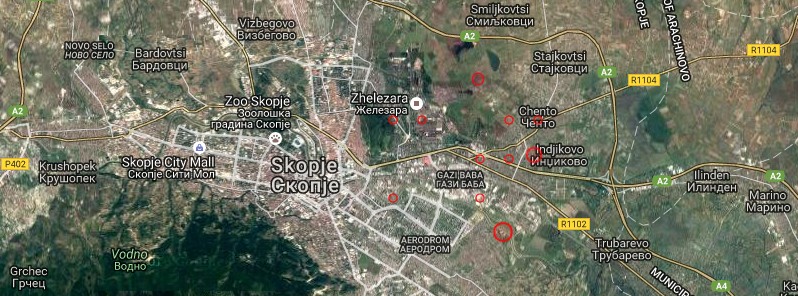
Between 04:58 UTC on September 11 and 12:19 UTC on September 12, EMSC registered a total of 11 shallow earthquakes under Macedonia's capital Skopje. The strongest was mb5.2 at 13:10 UTC on September 11, 2016.
More than 100 people have been injured and sought medical assistance. Most were injured while trying to leave their homes in panic. According to the MIA news agency, three people have been hospitalized, including a woman who fell off the first-floor terrace. Some of those who have been injured "admitted this would not have happened had they not panicked," Serbian B92 reported.
In 1963, a Mw6.1 earthquake hit Skopje destroying about 80% of the city. It killed over 1 070 people, injured between 3 000 and 4 000, and left more than 200 000 homeless. When yesterday's quake hit, panic was expected.
The strongest quake registered by the EMSC was mb5.2 at 13:10 UTC on September 11. It hit at a depth of 4 km (2.5 miles). USGS reported mb5.3 at a depth of 10 km (6.2 miles) and issued a yellow alert for shaking-related fatalities and economic losses.
According to the EMSC, the epicenter was located 4 km (2.5 miles) NE of Usje, 6 km (3.7 miles) E of Skopje (population 475 00), and 7 km (4.3 miles) NE of Sopište, Macedonia. The organization estimated there are 6.7 million people living in the felt area.

Image credit: EMSC
Seismologist Dragana Cernić of the national seismological observatory said she had received reports of cracks in the walls of buildings or collapsed chimneys, as well as damage to roofs in villages around Skopje. "The quake was felt throughout the country," Cernić added.
Parts of Skopje were without power and some mobile phone providers were down.
Many residents said they were terrified and stayed on the streets or in parks fearing to return to their homes.
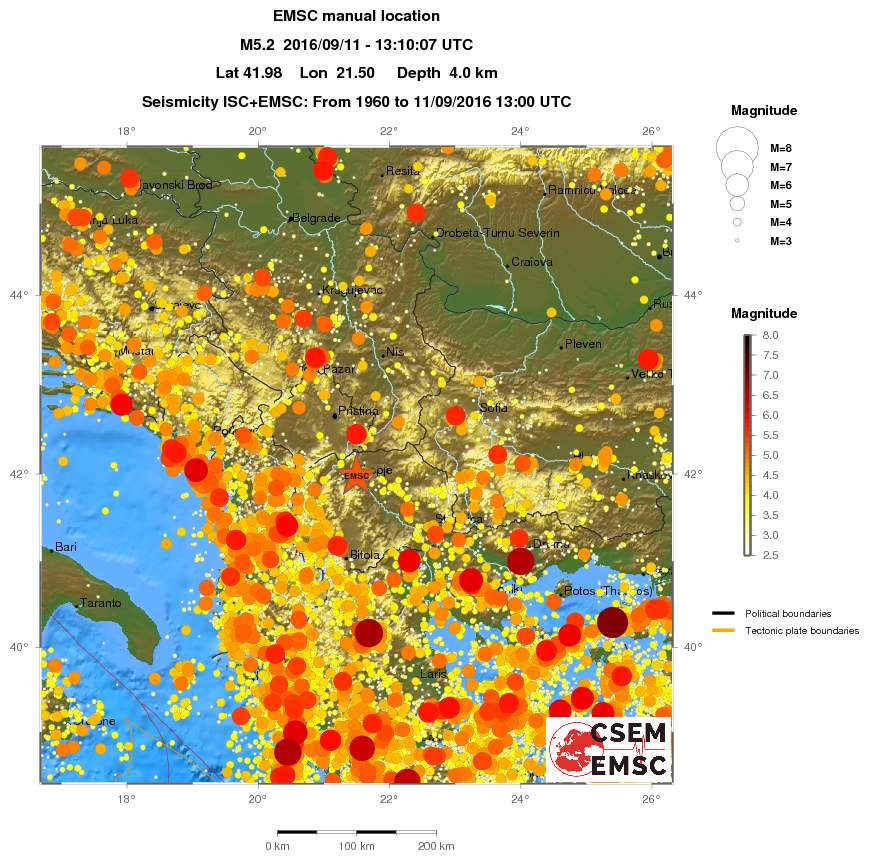
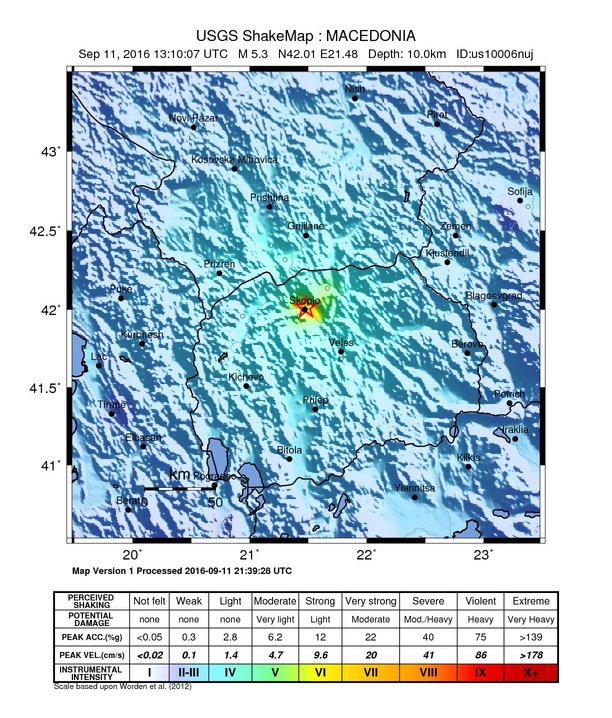
Overall, the population in this region resides in structures that are a mix of vulnerable and earthquake resistant construction. The predominant vulnerable building types are unreinforced brick with mud and mud wall with wood construction.
Recent earthquakes in this area have caused secondary hazards such as landslides that might have contributed to losses.
Estimated population exposure to earthquake shaking
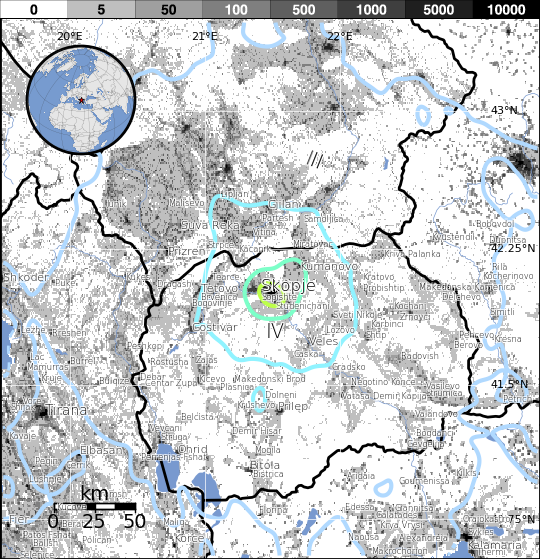
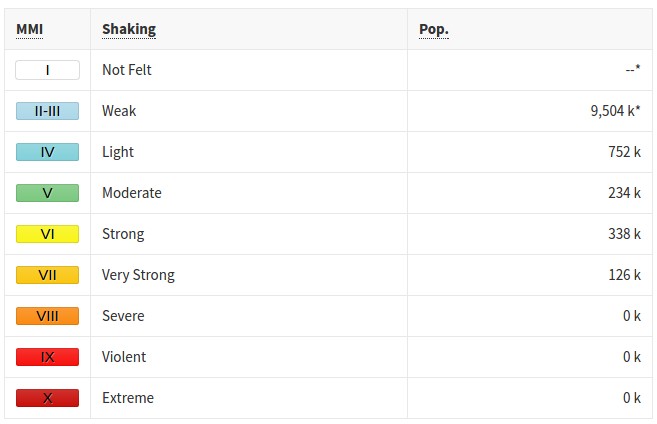
Selected cities exposed
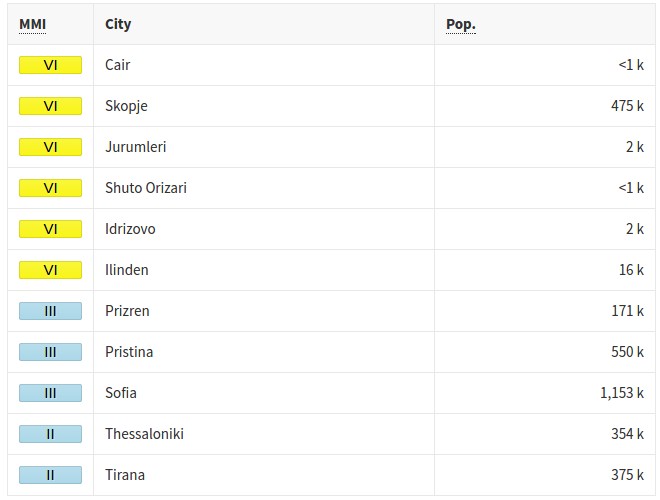
List of earthquakes
The following is a list of all earthquakes registered by the EMSC between 04:58 UTC on September 11 and 12:19 UTC on September 12, 2016 (as they hit):
- mb4.2 at 04:58 UTC on September 11 at a depth of 4 km (2.5 miles)
- ML2.8 at 05:00 UTC on September 11 at a depth of 3 km (1.8 miles)
- mb5.2 at 13:10 UTC on September 11 at a depth of 4 km (2.5 miles)
- ML2.9 at 13:14 UTC on September 11 at a depth of 2 km (1.2 miles)
- ML2.8 at 13:19 UTC on September 11 at a depth of 2 km (1.2 miles)
- ML2.1 at 13:30 UTC on September 11 at a depth of 1 km (0.6 miles)
- ML2.4 at 14:07 UTC on September 11 at a depth of 1 km (0.6 miles)
- ML2.5 at 14:45 UTC on September 11 at a depth of 3 km (1.8 miles)
- ML2.1 at 18:57 UTC on September 11 at a depth of 9 km (5.6 miles)
- ML2.3 at 09:50 UTC on September 12 at a depth of 1 km (0.6 miles)
- ML3.5 at 12:19 UTC on September 12 at a depth of 2 km (1.2 miles)
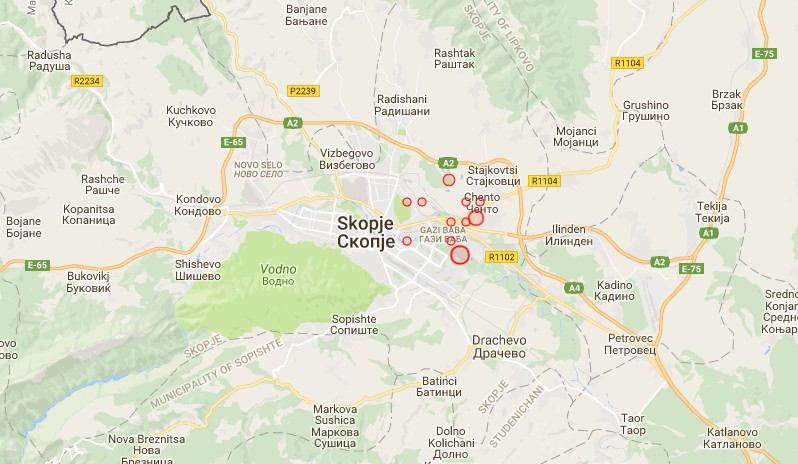
Skopje, Macedonia earthquakes between 04:58 UTC on September 11 and 12:19 UTC on September 12, 2016. Credit: EMSC
Update
At 17:53 UTC on September 12, EMSC registered 12th earthquake in this region, the second strongest in this sequence so far – mb4.8 at a depth of 5 km (3.1 miles). It hit 4 km (2.5 miles) NE of Skopje center.
Seismotectonics of the Mediterranean region and vicinity
The Mediterranean region is seismically active due to the northward convergence (4-10 mm/yr) of the African plate with respect to the Eurasian plate along a complex plate boundary. This convergence began approximately 50 Ma and was associated with the closure of the Tethys Sea. The modern day remnant of the Tethys Sea is the Mediterranean Sea. The highest rates of seismicity in the Mediterranean region are found along the Hellenic subduction zone of southern Greece, along the North Anatolian Fault Zone of western Turkey and the Calabrian subduction zone of southern Italy. Local high rates of convergence at the Hellenic subduction zone (35mm/yr) are associated with back-arc spreading throughout Greece and western Turkey above the subducting Mediterranean oceanic crust. Crustal normal faulting throughout this region is a manifestation of extensional tectonics associated with the back-arc spreading. The region of the Marmara Sea is a transition zone between this extensional regime, to the west, and the strike-slip regime of the North Anatolian Fault Zone, to the east. The North Anatolian Fault accommodates much of the right-lateral horizontal motion (23-24 mm/yr) between the Anatolian micro-plate and Eurasian plate as the Anatolian micro-plate is being pushed westward to further accommodate closure of the Mediterranean basin caused by the collision of the African and Arabian plates in southeastern Turkey. Subduction of the Mediterranean Sea floor beneath the Tyrrhenian Sea at the Calabrian subduction zone causes a significant zone of seismicity around Sicily and southern Italy. Active volcanoes are located above intermediate depth earthquakes in the Cyclades of the Aegean Sea and in southern Italy.
In the Mediterranean region there is a written record, several centuries long, documenting pre-instrumental seismicity (pre-20th century). Earthquakes have historically caused widespread damage across central and southern Greece, Cyprus, Sicily, Crete, the Nile Delta, Northern Libya, the Atlas Mountains of North Africa and the Iberian Peninsula. The 1903 M8.2 Kythera earthquake and the 1926 M7.8 Rhodes earthquakes are the largest instrumentally recorded Mediterranean earthquakes, both of which are associated with subduction zone tectonics. Between 1939 and 1999 a series of devastating M7+ strike-slip earthquakes propagated westward along the North Anatolian Fault Zone, beginning with the 1939 M7.8 Erzincan earthquake on the eastern end of the North Anatolian Fault system. The 1999 M7.6 Izmit earthquake, located on the westward end of the fault, struck one of Turkey's most densely populated and industrialized urban areas killing, more than 17,000 people. Although seismicity rates are comparatively low along the northern margin of the African continent, large destructive earthquakes have been recorded and reported from Morocco in the western Mediterranean, to the Dead Sea in the eastern Mediterranean. The 1980 M7.3 El Asnam earthquake was one of Africa's largest and most destructive earthquakes within the 20th century.
Large earthquakes throughout the Mediterranean region have also been known to produce significant and damaging tsunamis. One of the more prominent historical earthquakes within the region is the Lisbon earthquake of November 1, 1755, whose magnitude has been estimated from non-instrumental data to be about 8.0. The 1755 Lisbon earthquake is thought to have occurred within or near the Azores-Gibraltar transform fault, which defines the boundary between the African and Eurasian plates off the west coast of Morocco and Portugal. The earthquake is notable for both a large death toll of approximately 60,000 people and for generating a tsunami that swept up the Portuguese coast inundating coastal villages and Lisbon. An earthquake of approximately M8.0 near Sicily in 1693 generated a large tsunami wave that destroyed numerous towns along Sicily's east coast. The M7.2 December 28, 1908 Messina earthquake is the deadliest documented European earthquake. The combination of severe ground shaking and a local tsunami caused an estimated 60,000 to 120,000 fatalities. (USGS)
Featured image credit: EMSC, Google

There was an earthquake of M 7,8 in Pehcevo 1904.